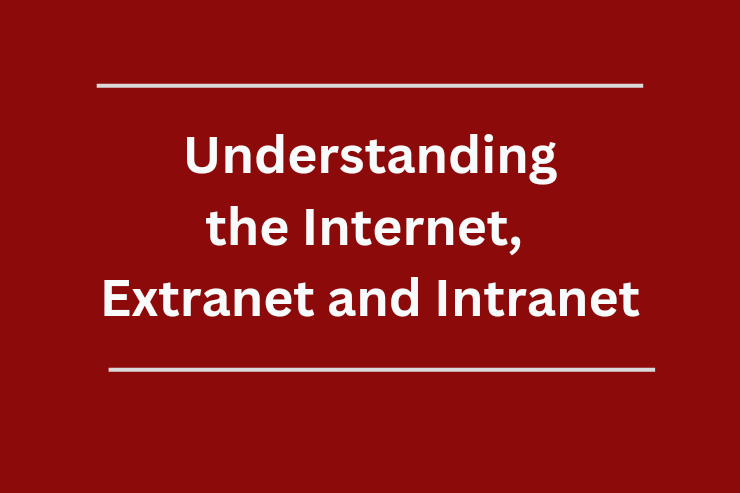
‘Internet’ is likely one of the world’s most popular terms as a word, a tool, and a concept. But its counterparts, ‘extranet’ and ’intranet’, are less popular. But for those familiar with all three terms, they know that internet, extranet, and intranet are often used interchangeably. However, they differ from each other in terms of their scope and usage. Today, we will break down the meanings of these terms in a simple and easy-to-understand manner.
Internet
The internet is a global network that connects computers and other devices around the world. It is a vast, decentralized system that allows people to share information, communicate with each other, and conduct business on a global scale. The internet is an open platform that allows anyone to create and publish content, and anyone with an internet connection can access that content.
The internet is built on a set of protocols known as TCP/IP (Transmission Control Protocol/Internet Protocol). These protocols define how data is transmitted over the internet, and how different devices on the network communicate with each other.
The internet has revolutionized the way we communicate, access information, and conduct business. It has made it possible for people to connect with each other across vast distances and has given rise to new forms of entertainment, education, and social interaction.
Extranet
An extranet is a private network that is accessible to authorized users outside of an organization’s internal network. It is a secure and controlled platform that allows organizations to share information, collaborate with partners and suppliers, and conduct business transactions.
Extranets are usually built using the same technology as the internet, but they are protected by firewalls and other security measures to ensure that only authorized users can access them. This makes extranets an effective way for organizations to extend their internal network to trusted partners and suppliers without exposing sensitive information to the public.
Extranets are often used in industries such as finance, healthcare, and manufacturing, where secure communication and collaboration with external partners are critical.
Intranet
An intranet is a private computer network that is used exclusively by an organization or company to share information and resources among its employees. It is essentially a closed version of the internet that is accessible only to authorized users within the organization.
An intranet is typically designed to facilitate internal communication and collaboration within an organization. It may include features such as email, instant messaging, discussion forums, file sharing, and document management systems. These tools allow employees to communicate with each other, share ideas, and work together on projects, even if they are in different locations or departments.
In addition to communication and collaboration tools, an intranet may also provide access to internal company resources such as databases, software applications, and other digital assets. This can help employees quickly find the information they need to do their jobs more effectively and efficiently.
One of the key benefits of an intranet is that it provides a secure and controlled environment for sharing information within an organization. Because access is restricted to authorized users, there is less risk of confidential or sensitive information being leaked to outsiders. In addition, the use of an intranet can help ensure that employees are following company policies and procedures when it comes to sharing and accessing information.
Overall, an intranet is an important tool for any organization that values communication, collaboration, and efficiency. By providing a secure and controlled platform for sharing information and resources, it can help employees work together more effectively and make better use of their time and skills.
Final thoughts
The internet, extranet, and intranet are all essential components of modern-day communication and information sharing. The internet connects people across the globe, enabling them to exchange information and ideas on a vast scale. Extranets are a secure extension of an organization’s internal network, which allows external parties, such as partners and customers, to access specific information or applications. On the other hand, intranets provide a secure network for an organization’s internal communication and information sharing. They allow employees to access shared resources, collaborate, and stay updated on company news and events. Each of these networks plays a crucial role in facilitating communication and information sharing, and their proper use can significantly improve productivity and efficiency within organizations. As technology continues to evolve, it is essential to understand the differences between these networks and their applications to make the most of them.










